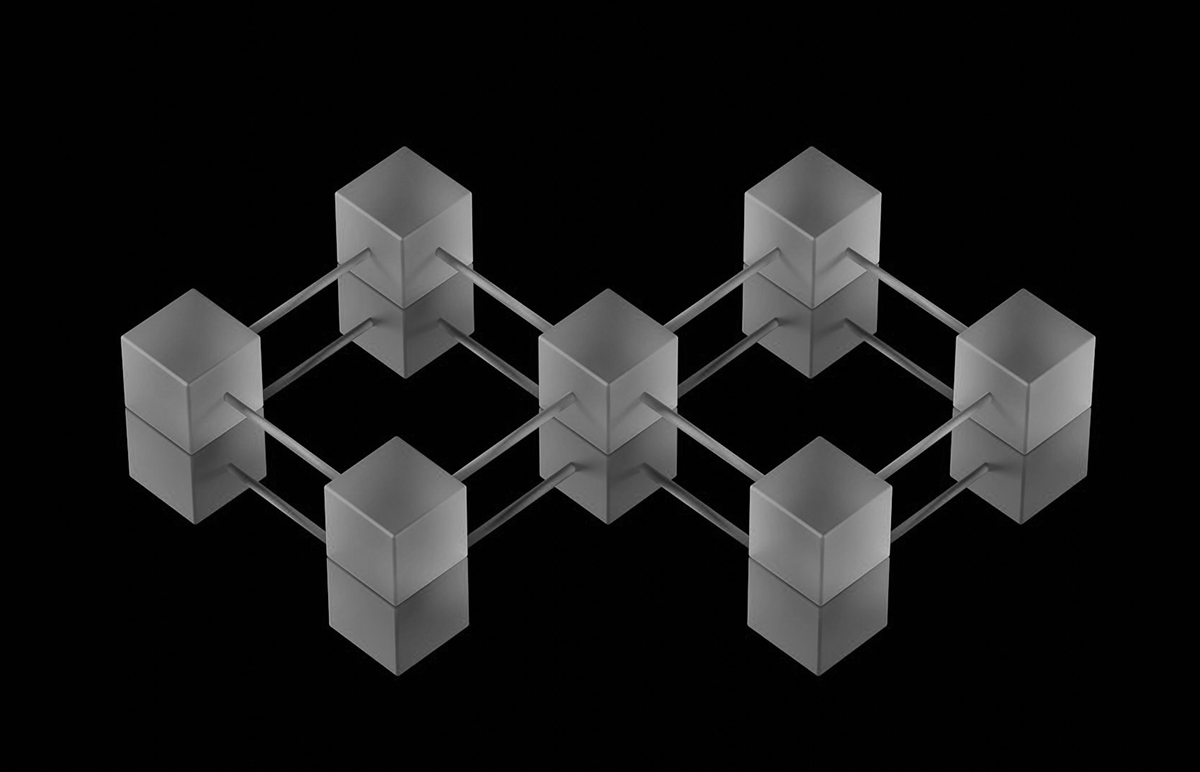
Data tokenization is a security method for replacing sensitive data with non-sensitive, unique tokens. The original data is stored securely in a separate database, and the tokens are used in its place for processing or analytics.
This method is particularly popular in payment processing because it allows companies to comply with industry standards without storing sensitive customer credit card information.
The advantage of tokenization is that even if tokens were stolen, they would be useless without the original data they represent, thus significantly reducing the risk of data breaches.
What is a Token?
A token is a digital representation of a value or a right. It substitutes sensitive data with no intrinsic or exploitable meaning or value. In the context of data security, a token can replace sensitive data such as credit card numbers or personally identifiable information in a database, making the data more secure. These tokens retain critical information without compromising security.
In other contexts, such as cryptocurrency, a token can represent a digital asset or utility built on an existing blockchain or platform. Tokens in this context can be bought, sold, or traded. Tokens are also used in software programming for various functions, such as representing an entity or breaking up text.
Why Is Data Tokenization Important for Data Security?
Data tokenization is vital for data security for several reasons:
Enhanced Security: Tokenization replaces sensitive data with non-sensitive ones, making it difficult for unauthorized users to access the actual data. Even if they manage to steal the tokens, they won't be able to get the original sensitive data without access to the tokenization system.
Compliance with Regulations: Many industries, particularly finance and healthcare, have strict regulations for protecting sensitive data. Tokenization helps organizations meet these requirements by ensuring that sensitive customer data is not stored in their system.
Data Breach Protection: Tokenization ensures minimal damage in the event of a data breach. The stolen data would be tokens, not actual sensitive data, making it useless to hackers.
Cost-Efficiency: By tokenizing data, businesses can limit the sensitive data they handle. This can reduce the costs associated with data security infrastructure and compliance.
Reduces Scope of PCI-DSS: For businesses that handle card payments, tokenization reduces the scope of PCI-DSS compliance. Only the areas of the system that handle tokens need to comply with the regulations, not the entire system.
Data Integrity: Unlike encryption, tokenization maintains the type and length of data. This makes it compatible with existing systems without requiring any changes and ensures data integrity.
Securing Data in Transit: Tokenization can secure data during transmission. Even if the data is intercepted during transmission, it will be useless to the hackers without the de-tokenization mechanism.
Insider Threat: Tokenization can also protect against insider threats, as sensitive data is not directly accessible to employees or system administrators but is replaced with unique tokens.
Who Uses Tokenization? What Industries Should Use Tokenization?
Tokenization is used by organizations and industries that handle sensitive data. These include:
- Financial Sector: Banks, credit card companies, insurance companies, brokerage firms, and fin-tech companies use tokenization to protect financial transactions and customers' personal data.
- Healthcare: Hospitals, clinics, pharmacies, and insurance companies use tokenizations to protect patients' private health information, including medical records.
- E-commerce and Retail: Online stores and retail companies that handle payment transactions use tokenization to protect customers' card information.
- Technology: Software firms, cloud service providers, and other technology companies use tokenization to protect user data, particularly when transacting and storing sensitive information.
- Education: Schools, universities, and other institutions use tokenization to protect students' and staff's personal data and financial information.
- Telecommunications: Telecom companies use tokenization to secure customer information, including payments and account details.
- Government: Public sector organizations at various federal, state/provincial, and local levels use tokenization to protect constituent data.
- Transportation and Hospitality: Airlines, hotels, and ride-sharing platforms utilize tokenization to process payments and securely protect customers' personal data.
How Is a Token Created in the Tokenization Process?
The process of creating a token in tokenization involves several steps:
- Identification: The first step is identifying the sensitive data that needs tokenization. This could be credit card numbers, social security numbers, etc.
- Generation: The tokenization system then generates a random token, which usually has the same format and length as the original data. This is critical for ensuring the token can be used in the same manner as the original data without any changes to the existing systems.
- Mapping: The generated token and the original data are then mapped to each other in a secure token database, also known as a token vault. This mapping is critical as it allows for the retrieval of original data when necessary.
- Replacement: The sensitive data in the database or system is then replaced with the generated token. This process is usually done in real-time, and the original data is then removed from the system or database.
- Storage: The original data is securely stored in the token vault, accessible only through the tokenization system. The token vault is usually encrypted and is often stored separately from the main database to secure the original data further.
The Different Types of Tokenization
Data Tokenization: This method involves replacing sensitive data with non-sensitive data. It's widely used to secure data such as social security numbers, bank account numbers, and other PII (Personally Identifiable Information).
Cryptographic Tokenization: It employs cryptographically derived tokens where the sensitive data is completely hidden, and the derived token is generated using a complex algorithm.
High-Value Tokenization: Used to replace unique, high-sensitivity data with distinct tokens. This is often used in secure digital voting systems, where each token represents a specific vote.
Low-Value Tokenization: This method is employed when the tokenized data doesn't require high-level security. It's often used in reward systems of e-commerce sites where each token represents a certain number of reward points.
Application Tokenization: This process is used by several online platforms to facilitate secure access and user interaction. For example, when users log into an application, they may receive a token that authorizes them to perform certain actions within that app.
API Tokenization: API tokens are a type of access token that confirms the identity of the user/application attempting to run the API.
Payment Tokenization: This process replaces sensitive card data (PAN - Primary Account Number) with a non-sensitive equivalent known as a token.
Detokenization: This is the reverse of the tokenization process, where tokens are swapped back for the original data.
Security Tokenization: Security Token Offering (STO) is a type of public offering in which tokenized digital securities, known as security tokens, are sold. This is usually done using a smart contract running on a blockchain.
Asset Tokenization: This type of tokenization refers to the process of converting rights to an asset into a digital token. For example, a real estate property can be tokenized, and these tokens can represent ownership over part of the property.
The Benefits of Data Tokenization
Benefits of data tokenization include:
Enhanced Data Security: Tokenization replaces sensitive data with non-sensitive tokens, reducing the risk of exploiting it if a breach occurs. Even if tokens are stolen, they are meaningless without access to the tokenization system.
Regulatory Compliance: Data tokenization helps organizations adhere to various industry regulations and standards like the Payment Card Industry Data Security Standard (PCI DSS), Health Insurance Portability and Accountability Act (HIPAA), and the General Data Protection Regulation (GDPR).
Reduced Impact of Data Breaches: Since tokenized data is useless without the detokenization key, even in the event of a data breach, the impact is far less damaging than if the actual sensitive data was stolen.
Compatibility with Legacy Systems: Tokenized data often maintains the same format and type as the original data which means legacy systems can process it without modification.
Minimized Business Risk: By using tokenized data in non-production environments for testing or analytics, organizations can minimize the risk of sensitive data exposure.
Simplified Data Management: With tokenization, businesses can achieve a unified view of their customer data while maintaining customer privacy.
Customer Confidence and Trust: Businesses can enhance customer trust and loyalty by employing rigorous security measures like tokenization.
Cost Saving: Tokenization can result in significant long-term cost savings by reducing the scope of data compliance audits and minimizing the impact of data breaches.
The Challenges and Limitations of Data Tokenization
Token Management: A secure, central token vault must maintain the link between the tokens and the original data to manage tokens. If this system is compromised, it may result in data breaches.
Integration Issues: Tokenization systems must be compatible with existing systems, applications and databases. If not properly integrated, it may lead to operational problems.
Performance Impact: Tokenization might impact system performance. Retrieving the original data by detokenizing can lead to additional processing time.
Scalability: As data volumes grow, maintaining token databases and creating unique tokens can become more challenging and resource-intensive.
Reversibility: While tokens are intended to provide non-reversible security, an attacker who gains access to the tokenization system could potentially detokenize the data.
Cost: Implementing a tokenization solution can be expensive. Costs can include the price of the system itself, implementation costs, ongoing maintenance, and potential upgrades.
Compliance: Whilst tokenization can assist in obtaining some regulatory compliances, regulations vary by country and industry. Hence, constantly changing rules can make ongoing compliance challenging.
Vendor Lock-in: Once a tokenization solution is implemented, it may be difficult to switch providers or systems due to the complexity involved in migrating token databases.
Limited Use Cases: Tokenization is primarily used for structured data. It's less effective with unstructured data, which accounts for most data in today's digital landscape.
Collaboration & Data Sharing: If data needs to be shared with third parties, they, too, need access to the tokenization system to detokenize it, posing additional security risks.
How To Choose Between Data Tokenization and Encryption?
Choosing data tokenization or encryption depends on factors such as the type of data, business needs, operational constraints, and compliance requirements.
Here are some pointers that can help you make the right choice:
- Data Type: Tokenization is ideal for structured data like credit card numbers, while encryption is better for unstructured data like files, documents, etc.
- Performance: Since tokenization does not use computational resources like encryption, it can provide better performance.
- Reversibility: Encryption is reversible by design, meaning anyone with the decryption key can decode the data. Tokenization is not reversible without access to the token vault, making it more secure.
- Implementation Complexity: Encryption is relatively easy to implement across various platforms and programming languages. On the other hand, tokenization can be more complex to implement due to the need for a token vault, but it can offer greater security.
- Integration: If your systems are sensitive to changes in data format or length, tokenization, which can preserve original formats, maybe a better choice.
- Key Management: Encryption requires rigorous key management practices. Tokenization doesn’t require this as there is no key, so you may find it easier to manage.
- Storage: Consider how the data is stored. Data stored in a cloud server might benefit from the added security of tokenization since tokens are useless if stolen.
What are the Data Tokenization Use Cases?
In addition to data protection and compliance, tokenization has extensive use cases across various industries where securing sensitive data is paramount:
Payment Security: Tokenization is commonly used in retail and e-commerce to protect credit and debit card information. When a transaction occurs, the payment card details are replaced with a token, which is passed through the network, significantly reducing the possibility of data breaches and credit card fraud.
Healthcare: Patient records often contain a wealth of sensitive data, ranging from contact details to medical history. Tokenizing this data can secure it, ensuring compliance with HIPAA and other regulations while increasing patient trust.
Financial Services: Banks and financial institutions handle a wide array of sensitive data, including account numbers, transaction details, and Social Security numbers. These organizations often use tokenization to secure this data, mitigating the risk of fraud.
IoT Devices: IoT devices often transmit sensitive data. Many IoT implementers use tokenization to protect this data in transit or stored on the device.
Mobile Payments: Mobile payment applications often use tokenization to replace sensitive payment information with a token. This allows the mobile application to complete the transaction without exposing the user's actual payment card details.
Blockchain & Cryptocurrencies: Blockchain technology uses tokenization. In the context of cryptocurrency, tokens often represent tangible value, such as assets or cryptographic currency units (like bitcoin).
Streaming Media Services: Media providers use tokenization to protect licensed content, ensuring only authorized users can access the media.
Third-Party Risk Management: When sharing data with vendors and third-party services, tokenization can allow meaningful data analysis without revealing sensitive information, reducing third-party risk.

